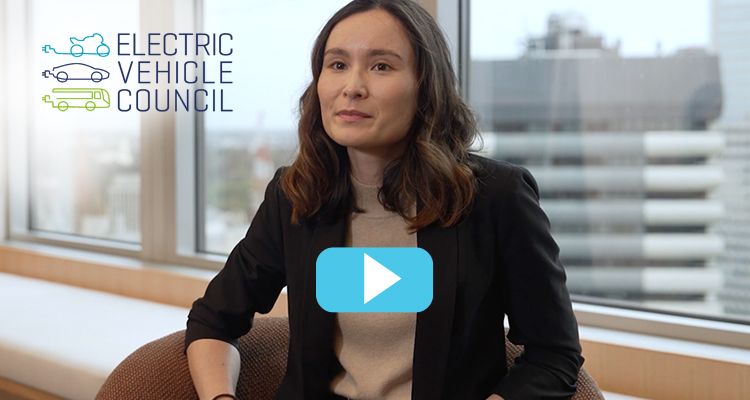
In addition to lower running and maintenance costs, fringe benefits tax (FBT) exemptions can be a substantial benefit to transitioning to an electric fleet. But evolving rules and regulation can make it tricky to navigate the FBT landscape and prepare for the end of fringe benefits tax year.
Whether you’ve already made the switch or are thinking about adopting an electric vehicle fleet, it’s important to consider how EVs will impact your organisation’s FBT obligations – and your people.
A recent webinar presented by KPMG, hosted by Australasian Fleet Management Association (AfMA), shed some light on FBT rules, exemptions, calculations and what the future may look like. Here are five key takeaways you need to consider for your electric fleet.
1. Exemptions are here to stay (mostly)
FBT exemptions aim to increase electric vehicle affordability and boost competition in the market – ultimately leading to a greater uptake of EVs. For now, these exemptions have no end date. But they are set for review by mid-2027, when the government will reassess Australia’s EV up-take and decide if the exemptions are still relevant.
However, exemptions for plug-in hybrid vehicles will come to an end on 1 April 2025, when they will be no longer considered a zero or low emissions vehicle under the FBT law. But there are a few exceptions.
You will still be eligible for an exemption if:
- Your plug-in hybrid vehicle was exempt before 1 April 2025.
- You have a financially binding agreement to continue providing the vehicle after this date, and there are no driver changes.
2. Charging at home has its challenges
For employees who are provided with an electric car as a ‘tool of trade’, the associated costs of running an electric car, such as registration, insurance, servicing, maintenance and charging, are also exempt from FBT. But when employees plug in to charge their car at home, relevant costs can be tricky to calculate.
One of the biggest challenges around home charging costs is the inability to separate the costs of charging an EV from running other electrical appliances. This is made more difficult by the varying price of electricity for each employee and the time of day they charge their vehicles. And when you add solar and bi-directional charging and home batteries to the list, working out the cost of at-home charging can become complex.
To help taxpayers, the ATO has released its Practical Compliance Guidelines around electric vehicle home charging rates. It recommends using a rate of $0.042/km for calculating EV at-home charging costs. And while there are still some grey areas when it comes to FBT for EVs, this is a great start.
3. At-home EV charger infrastructure is not FBT exempt
One common misconception is that the cost of setting up employees with charging infrastructure at home is exempt from FBT. While the costs of electricity to charge an EV on a business premises attracts an exemption, setting up charging stations at an employee’s home does not.
If an employer arranges the installation of charging infrastructure at home, it will be considered a property fringe benefit. If an employee buys and arranges it themselves and claims it as an expense, it is an expense payment fringe benefit.
The ATO has also flagged that where home charging infrastructure is rolled into a lease agreement, the costs of the chargers need to be separated. It will be calculated as a fringe benefit, attracting the relevant tax.
4. Fringe tax benefit amounts can impact employees
When an employee receives a fringe benefit of more than $2,000 in an FBT year, their annual income statement will include a reportable fringe benefit amount. This amount reflects the non-cash benefits they’ve received from their employer. While this doesn’t affect how much tax they have to pay, it can impact other means-tested government benefits they receive – for example, a Medicare levy surcharge, HECS repayments and child support payments.
Let’s say John drives an $85,000 EV for work and he is in the top tax bracket. Using the 20% statutory formula, his car will have a taxable value of $17,000 for reportable purposes and hence the reportable fringe benefits amount he received will be listed as $32,075.60 on his income summary at the end of the tax year.1 This might impact the amount of Medicare Levy Surcharge John needs to pay, for example.
While fringe benefit amounts may not be relevant for everyone, it’s important to be aware of how the implications of an EV fleet might impact specific people in your organisation.
“You need to suggest that employees who are going to get an electric vehicle seek independent financial advice, because if they do for example have a HECS debt or receive a family benefit, an EV might not be right for them.”
Nathan Ritchie – Relationship Manager, Interleasing
5. Luxury cars are not exempt from FBT – but the threshold is changing come 1 July 2025
While one of the requirements to qualify for FBT exemptions is that no luxury car tax has been paid on an EV (including supply and importation costs), there is good news.
Recent changes to the luxury car tax include a higher threshold for fuel-efficient vehicles.
“This increased luxury car tax limit for FY24 has boosted the number of vehicles eligible for the FBT exemption, providing employers a greater range to choose from,” Nathan says.
While the waters are still murky around FBT and electric vehicles, legislation is changing to try to keep pace with transforming fleets. If you have any questions about FBT and relevant exemptions or implications of transitioning to an electric fleet, please get in touch.


